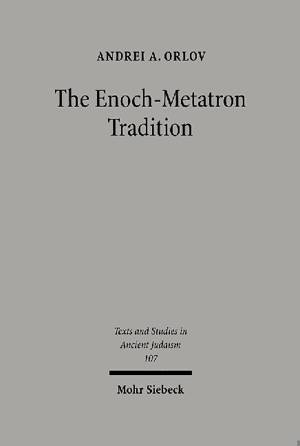
- Afhalen na 1 uur in een winkel met voorraad
- Gratis thuislevering in België vanaf € 30
- Ruim aanbod met 7 miljoen producten
- Afhalen na 1 uur in een winkel met voorraad
- Gratis thuislevering in België vanaf € 30
- Ruim aanbod met 7 miljoen producten
Zoeken
The Enoch-Metatron Tradition
Dissertationsschrift
Andrei A Orlov
Hardcover | Engels | Texte und Studien zum Antiken Judentum / Texts and Studies in Ancient Judaism TSAJ | nr. 107
€ 254,45
+ 508 punten
Omschrijving
Andrei A. Orlov examines the tradition about the seventh antediluvian patriarch Enoch, tracing its development from its roots in the Mesopotamian lore to the Second Temple apocalyptic texts and later rabbinic and Hekhalot materials where Enoch is often identified as the supreme angel Metatron. The first part of the book explores the imagery of the celestial roles and titles of the seventh antediluvian hero in Mesopotamian, Enochic and Hekhalot materials. The analysis of the celestial roles and titles shows that the transition from the figure of patriarch Enoch to the figure of angel Metatron occurred already in the Second Temple Enochic materials, namely, in 2 (Slavonic) Enoch, a Jewish work, traditionally dated to the first century CE. The second part of the book demonstrates that mediatorial polemics with the traditions of the exalted patriarchs and prophets played an important role in facilitating the transition from Enoch to Metatron in the Second Temple period.
Specificaties
Betrokkenen
- Auteur(s):
- Uitgeverij:
Inhoud
- Aantal bladzijden:
- 395
- Taal:
- Engels
- Reeks:
- Reeksnummer:
- nr. 107
Eigenschappen
- Productcode (EAN):
- 9783161485442
- Verschijningsdatum:
- 1/05/2005
- Uitvoering:
- Hardcover
- Formaat:
- Genaaid
- Afmetingen:
- 165 mm x 244 mm
- Gewicht:
- 725 g

Alleen bij Standaard Boekhandel
+ 508 punten op je klantenkaart van Standaard Boekhandel
Beoordelingen
We publiceren alleen reviews die voldoen aan de voorwaarden voor reviews. Bekijk onze voorwaarden voor reviews.








